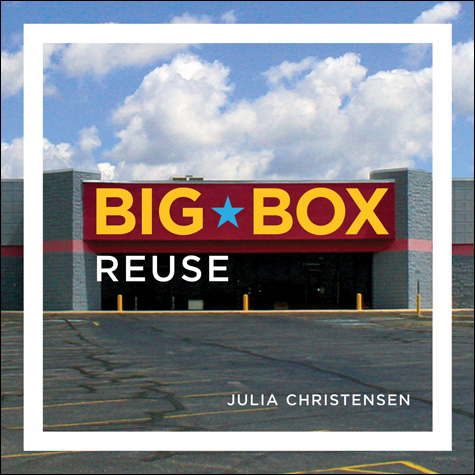Some of my happiest moments at my desk are when I get notification of the latest Planetizen Newswire newsletter in my in-box. I pour a cup of coffee or get some water and settle in to read some of the most interesting national and international planning news around. The August 28th edition caught my eye with the article titled, "Something New Inside Failed Big Boxes." I was intrigued.
In the town where I lived in Texas (Taylor, home of the world famous Louis Mueller barbecue) the patterns of development can be read like the strata of rock formations. There is very clearly the turn-of-the-century Main Street and downtown district, bordered by the historic neighborhoods of American Four-squares and cottages, built up through 1930. Drive north on Main Street and just past this first layer of the original town is the 1950's and 60's version of the town - some modest strip malls, ranch houses and split levels. Next comes the 1980's developments - more ranches, just slightly different materials, but definitately more strip malls. Finally there is the most recent turn-of-the-century section. The builder communities and - you guessed it - more strip malls.
Starting downtown there is the former Piggly-Wiggly grocery store, abandoned in the 1960's; now City Hall. Interesting adaptive reuse to be sure but kind of a sad building, especially in light of the 1920 City Hall that sits on the main square downtown, now relegated to once-a-year use as a haunted house. But I digress. The next layer of strip malls, the 1960's versions, are surrounded by a sea of pavement, no landscaping, just plenty of room for cars, cars and more cars. Whatever the original anchor stores of these plazas were they have now been replaced by Rent-a-Center, Family Dollar and, most recently and impressively, the YMCA. In the next layer the 1980's strip malls have only very recently been abandoned by HEB (the Texas Wegmans) and Wal-Mart. There they sat, across the street from one another, totally empty, for a couple of years. As far as I know there is still nothing in the Wal-Mart although the HEB plaza was recently purchased and a clothing store - Bealls (think Sears) - was going in. The rest of the plaza is Dominos, China Buffet and Dollar Tree (because Family Dollar just isn't enough).
Almost completely outside of town is the newest incarnation of each sprawling store. Built on greenfield sites where new roads had to be constructed, by the city, and ulities had to be provided, by the city, they again sit directly across the (brand spaking new) street from one another. Each has numerous vacant store fronts surrounding them because apparently, despite the mostly empty downtown, the mostly empty 1960's plazas, the mostly empty 1980's plazas, Taylor needed more retail space.
So, slowly but surely these hulking spaces have been turned into something, except for the abandoned Wal-Mart.
The article that got me thinking about all of this, Towns Recycle Abadonded Stores, had some really excellent points to make and some innovative solutions. Some towns are now requiring that when big-box stores are constructed that they include the infrastructure for the building, once abandoned, to be more easily convereted in smaller, more manageable and rentable, spaces. Some are becoming churches or medical centers. Inspirational. I belive in Fort Worth, Texas an old Eckard's Drug Store was rehabbed as gallery space.
So, to the book that will be on Christmas wish list. Featured in the article is Julia Christensen and her forthcoming book Big Box Reuse. In it Ms. Christensen highlights ten communities that have come up with innovative solutions for adaptive reuse of these vacant hulks. Visit the website for the book to view a map of the featured projects and to preorder the book. It looks like the kind of information that every preservationist and urban design professional will want to have in their tool-kit. Believe it or not people the day of the historic Wal-Mart is coming.
The book comes out in November - expect a blog or a newsletter article reviewing it soon after!
posted by Rebecca Rowe, Preservation Program Coordinator for The Landmark Society.![]()
Friday, September 5, 2008
I am putting this book on my Christmas wish list!
Subscribe to:
Post Comments (Atom)



1 comment:
This book looks interesting. We have at least one successful big box re-purposing here in Jamestown, NY. The former Ames department store right at the edge of our central business district (downtown) was turned into a medical facility, Jamestown Area Medical Associates. The picture on the front page of the site show what the former big box looks like now.
I keep hoping that someone comes up with a viable re-use of the former Irondequoit Mall/Medley Centre.
Post a Comment